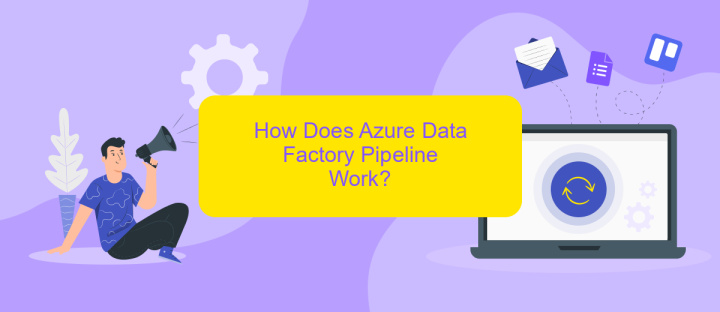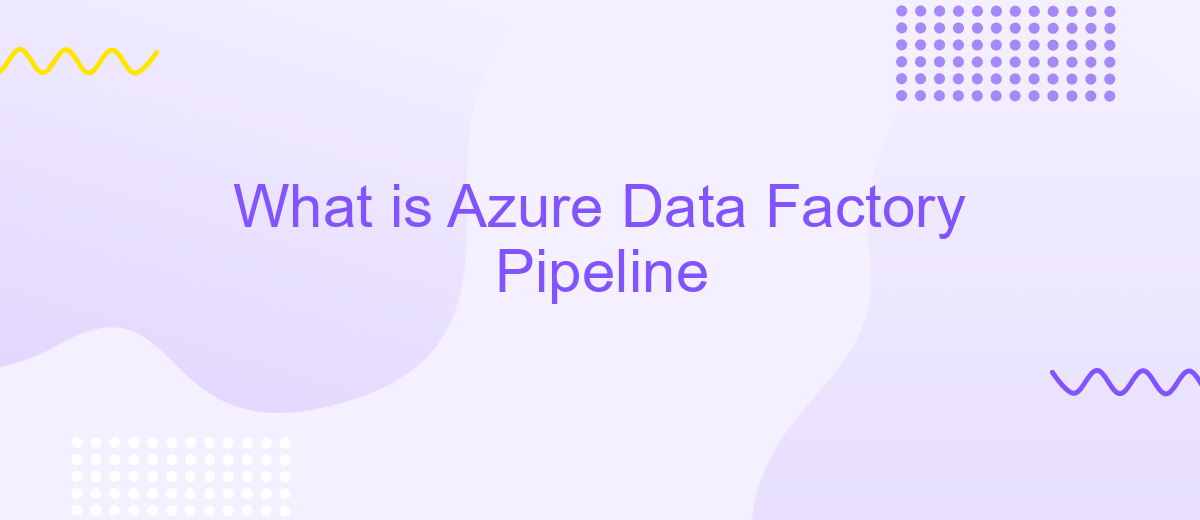What is Azure Data Factory Pipeline
Azure Data Factory Pipeline is a cloud-based data integration service that allows you to create, schedule, and orchestrate data workflows. It enables seamless data movement and transformation across various sources and destinations. With its robust capabilities, Azure Data Factory helps organizations efficiently manage and automate data processes, ensuring data is readily available and actionable for analytics and decision-making.
What is Azure Data Factory Pipeline?
Azure Data Factory Pipeline is a powerful cloud-based data integration service that enables the creation, scheduling, and orchestration of data workflows. It allows users to move and transform data from various sources to desired destinations, ensuring seamless data flow and processing.
- Data Ingestion: Collect data from diverse sources like on-premises databases, cloud storage, and SaaS applications.
- Data Transformation: Apply data transformation processes using mapping data flows or custom activities.
- Data Movement: Transfer data between different storage systems and services securely and efficiently.
- Scheduling and Monitoring: Schedule pipelines to run at specific times and monitor their performance and status.
Azure Data Factory Pipeline is ideal for building complex data workflows that require robust scheduling and monitoring capabilities. For seamless integration with various services, tools like ApiX-Drive can be utilized to automate data transfers and transformations, enhancing the overall efficiency and reliability of the data integration process.
Key Features and Benefits

Azure Data Factory Pipeline offers a robust and scalable solution for orchestrating and automating data workflows. One of its key features is the seamless integration with a wide array of data sources, both on-premises and cloud-based, allowing for smooth data ingestion and transformation. The intuitive drag-and-drop interface simplifies the creation of complex workflows, making it accessible even to users with limited coding experience. Additionally, its built-in monitoring and alerting capabilities ensure that any issues in the pipeline are promptly identified and addressed, minimizing downtime and maintaining data integrity.
Another significant benefit is the flexibility and extensibility provided by Azure Data Factory Pipeline. It supports custom activities and can be integrated with other Azure services such as Azure Machine Learning and Azure Databricks for advanced analytics and machine learning workflows. For businesses looking to streamline their data integration processes, services like ApiX-Drive can be utilized to automate data transfers between various applications, further enhancing productivity. This combination of features makes Azure Data Factory Pipeline an essential tool for modern data management and analytics.
How Does Azure Data Factory Pipeline Work?

Azure Data Factory Pipeline is a cloud-based data integration service that allows you to create, schedule, and orchestrate data workflows. It enables the movement and transformation of data from various sources to destinations, ensuring seamless data flow across the organization.
- Data Ingestion: Azure Data Factory Pipeline connects to multiple data sources, such as on-premises databases, cloud storage services, and SaaS applications, to ingest data.
- Data Transformation: It leverages data transformation activities, like mapping data flows or executing custom code, to process and prepare data for analysis.
- Data Movement: The pipeline moves the transformed data to target destinations, such as data warehouses, data lakes, or analytics services, for further consumption.
- Monitoring and Management: Azure Data Factory provides monitoring tools to track pipeline performance, manage dependencies, and handle errors efficiently.
By integrating with services like ApiX-Drive, Azure Data Factory can automate data workflows between different applications, enhancing the efficiency of data integration processes. ApiX-Drive simplifies the setup of these integrations, allowing users to connect various services without extensive coding efforts, thus streamlining data operations.
Use Cases and Scenarios

Azure Data Factory Pipelines are instrumental in orchestrating and automating data movement and data transformation. They provide a versatile solution for integrating disparate data sources and transforming data into actionable insights, making them ideal for various business scenarios.
One common use case is ETL (Extract, Transform, Load) processes where data from multiple sources like SQL databases, cloud storage, and APIs are consolidated, transformed, and loaded into a data warehouse or data lake. This allows organizations to have a unified view of their data for analytics and reporting.
- Data Migration: Seamlessly move data between on-premises and cloud environments.
- Data Integration: Combine data from various sources such as databases, APIs, and file systems.
- Data Transformation: Apply complex transformations to raw data to make it analysis-ready.
- Real-time Data Processing: Handle streaming data for real-time analytics and monitoring.
For those looking to streamline their data integration processes further, services like ApiX-Drive can be invaluable. ApiX-Drive simplifies the integration of various APIs, making it easier to automate workflows and ensure data consistency across multiple platforms. By leveraging these tools, businesses can enhance their data pipelines' efficiency and reliability.
Getting Started with Azure Data Factory Pipeline
To get started with Azure Data Factory Pipeline, first, you need to create an Azure account and sign in to the Azure portal. Once logged in, navigate to the Data Factory service, and click on "Create a resource." Fill in the necessary details such as subscription, resource group, and region, then create your Data Factory instance. After creation, go to the Data Factory page and click on "Author & Monitor" to open the Data Factory UI.
In the Data Factory UI, you can start creating your pipeline by clicking on the "Author" tab and then on the "+" button to create a new pipeline. Add activities to your pipeline by dragging and dropping them from the Activities pane. To facilitate data integration tasks, consider using ApiX-Drive, a service that simplifies the process of connecting various APIs and automating data transfers. Configure your activities and set up triggers to schedule your pipeline's execution. Once everything is set up, publish your pipeline and monitor its performance through the Azure portal.
FAQ
What is an Azure Data Factory Pipeline?
How do I create an Azure Data Factory Pipeline?
What types of activities can be included in an Azure Data Factory Pipeline?
Can I integrate Azure Data Factory with other automation and integration services?
How can I monitor the performance of my Azure Data Factory Pipelines?
Routine tasks take a lot of time from employees? Do they burn out, do not have enough working day for the main duties and important things? Do you understand that the only way out of this situation in modern realities is automation? Try Apix-Drive for free and make sure that the online connector in 5 minutes of setting up integration will remove a significant part of the routine from your life and free up time for you and your employees.

